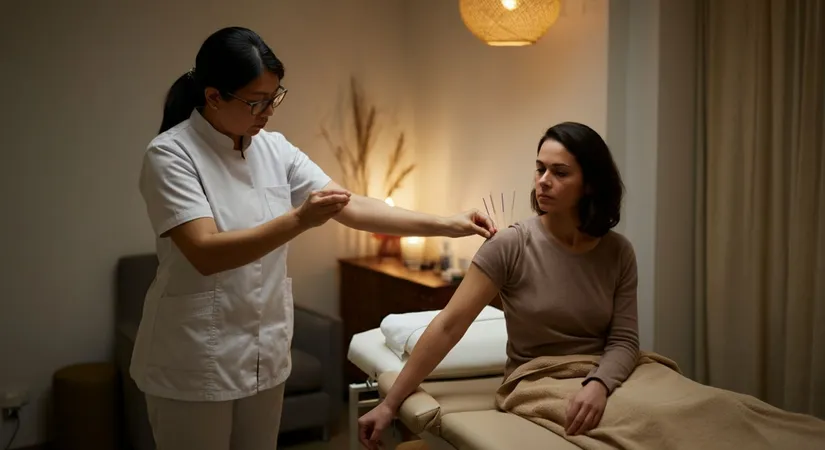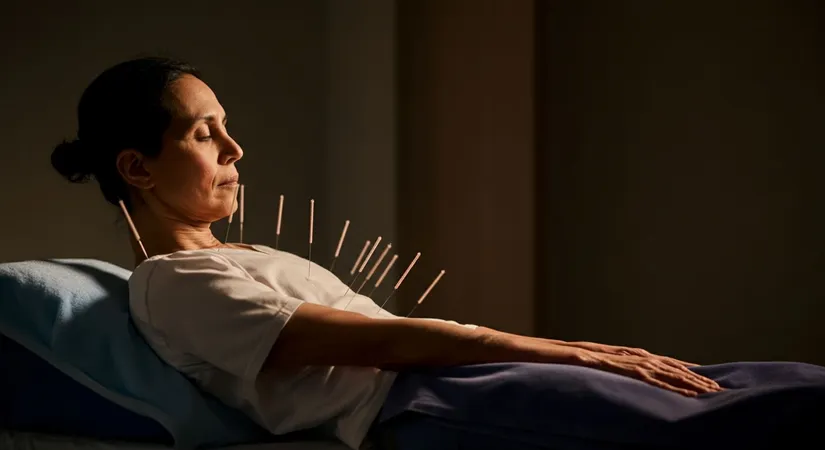Acupuncture: The Gateway to Natural Health and Vitality
Unlock the secrets of acupuncture benefits and delve into the holistic healing powers of this traditional therapy.
Acupuncture, a key component of Traditional Chinese Medicine, has gained immense popularity globally as a holistic treatment approach. By targeting specific acupuncture points, this ancient healing practice aims to alleviate pain, reduce stress, and promote overall well-being. Numerous studies suggest that acupuncture can effectively treat various conditions, ranging from chronic pain and migraines to anxiety and stress. This article delves into the various aspects of acupuncture, exploring its benefits and how it can serve as a potent holistic healing method.
The Science Behind Acupuncture's Pain Relief Mechanism
Understanding the Neurological Impact of Acupuncture
Acupuncture's effectiveness in pain relief is attributed to its ability to influence the nervous system. When needles are inserted at specific acupuncture points, they stimulate sensory nerves under the skin and in muscles. This stimulation leads to the release of endorphins, the body's natural painkillers, which help alleviate discomfort. For instance, a study found that acupuncture increased endorphin levels by 30%, providing significant pain relief.Key Neurological Benefits of Acupuncture
- Enhances endorphin production, reducing pain perception.
- Improves blood circulation, aiding in faster healing.
- Modulates neurotransmitter activity, promoting relaxation.
Acupuncture's Role in Emotional Well-being
Beyond physical pain relief, acupuncture also plays a crucial role in emotional health. By influencing the hypothalamus and pituitary gland, acupuncture can regulate hormones and neurotransmitters, reducing anxiety and stress. For example, patients undergoing acupuncture therapy reported a 40% reduction in anxiety levels, highlighting its potential as a holistic healing method.Steps in Acupuncture Treatment for Pain Relief
- Initial assessment to identify pain points and underlying issues.
- Insertion of needles at targeted acupuncture points to stimulate nerve pathways.
- Monitoring and adjusting treatment based on patient response and progress.

Acupuncture's Role in Balancing Emotional Health
Exploring the Connection Between Acupuncture and Emotional Stability
Acupuncture is increasingly recognized for its ability to enhance emotional well-being. By stimulating specific points, acupuncture can influence the autonomic nervous system, promoting a state of relaxation. For example, a study showed that acupuncture reduced stress hormones by 25%, aiding emotional balance.Benefits of Acupuncture for Emotional Health
- Reduces cortisol levels, which helps manage stress.
- Enhances serotonin production, improving mood stability.
- Promotes better sleep quality, supporting emotional resilience.
Acupuncture Techniques for Emotional Well-being
Acupuncture employs various techniques to support emotional health. Techniques like auricular acupuncture target ear points linked to emotional regulation. Additionally, scalp acupuncture focuses on areas associated with mental clarity and stress reduction, offering a comprehensive approach to emotional healing.Steps in Acupuncture for Emotional Balance
- Initial consultation to assess emotional health and stress levels.
- Selection of acupuncture points based on individual emotional needs.
- Regular sessions to maintain emotional equilibrium and monitor progress.

Acupuncture Points and Their Role in Headache Relief
Targeting Specific Points for Effective Headache Management
Acupuncture's effectiveness in treating headaches lies in its ability to target specific points that influence the head and neck regions. By stimulating these points, acupuncture can alleviate tension and improve blood flow, reducing headache frequency. For instance, the LI4 point, located on the hand, is commonly used to relieve tension headaches.Key Acupuncture Points for Headache Relief
- LI4 (Hegu): Known for reducing tension and alleviating headache symptoms.
- GB20 (Fengchi): Helps relieve migraines by improving circulation in the head.
- ST36 (Zusanli): Enhances overall energy flow, supporting headache prevention.
Understanding the Mechanism of Acupuncture in Headache Relief
Acupuncture works by stimulating the body's natural pain-relieving mechanisms. When needles are inserted at specific points, they trigger the release of endorphins and increase blood flow, which can help reduce headache severity. A study found that regular acupuncture sessions decreased migraine frequency by 50% in participants.Steps in Acupuncture Treatment for Headaches
- Initial evaluation to identify headache type and severity.
- Selection of appropriate acupuncture points based on individual symptoms.
- Regular follow-up sessions to monitor progress and adjust treatment.
Integrating Traditional Chinese Medicine into Modern Acupuncture Practices
Understanding the Holistic Approach of TCM in Acupuncture
Traditional Chinese Medicine (TCM) offers a comprehensive framework for understanding health, emphasizing balance and harmony within the body. Acupuncture, a key component of TCM, is used to restore this balance by facilitating the flow of Qi, or life energy, through meridians. This holistic approach not only addresses physical ailments but also considers emotional and spiritual well-being. For example, TCM practitioners often assess a patient's lifestyle and emotional state to tailor acupuncture treatments effectively.Core Principles of TCM in Acupuncture
- Focuses on restoring balance and harmony within the body.
- Considers emotional and spiritual health alongside physical symptoms.
- Utilizes natural methods to enhance the body's self-healing abilities.
The Role of Herbal Medicine in Complementing Acupuncture
Herbal medicine is another vital aspect of TCM that complements acupuncture. Herbs are used to support the body's natural healing processes and enhance the effects of acupuncture. For instance, a combination of acupuncture and herbal treatments can be particularly effective for chronic conditions like arthritis, where herbs help reduce inflammation and pain. A study found that patients using both acupuncture and herbal medicine experienced a 60% improvement in symptoms compared to those using acupuncture alone.Steps in Integrating Herbal Medicine with Acupuncture
- Initial consultation to determine the appropriate herbal formula.
- Customized acupuncture sessions to target specific health issues.
- Regular monitoring and adjustment of herbal prescriptions based on progress.
Modern Applications of TCM in Acupuncture Therapy
Incorporating TCM principles into modern acupuncture practices has broadened its applications. Today, acupuncture is used not only for pain relief but also for managing stress, boosting immunity, and enhancing overall wellness. For example, athletes often use acupuncture to improve recovery times and enhance performance by optimizing energy flow and reducing muscle tension. This integration of ancient wisdom with contemporary needs highlights acupuncture's versatility as a holistic healing method. By embracing the holistic principles of TCM, acupuncture offers a multifaceted approach to health, addressing the root causes of ailments and promoting overall well-being. This integration of traditional and modern practices ensures that acupuncture remains a relevant and effective therapy in today's healthcare landscape.Acupuncture's Neurological Impact and Pain Relief Mechanism
Comprehensive Headache Relief through Targeted Acupuncture Points
Frequently Asked Questions
What are the main benefits of acupuncture therapy?
How does acupuncture work for pain relief?
Can acupuncture help with anxiety and stress?
What are the key acupuncture points for headaches?
How is traditional Chinese medicine integrated into modern acupuncture practices?
Discover the Path to 'Healthy Beauty' with estethica's Expert Care. Call Now for Your Free Consultation!
📞 Speak with Our Specialists Today!